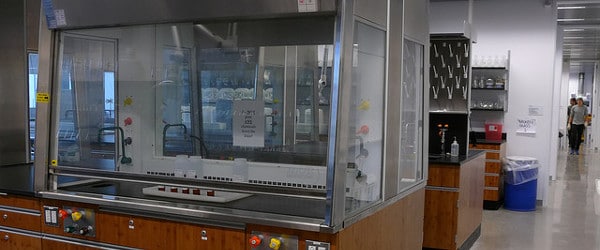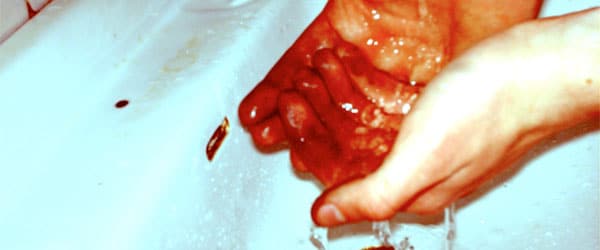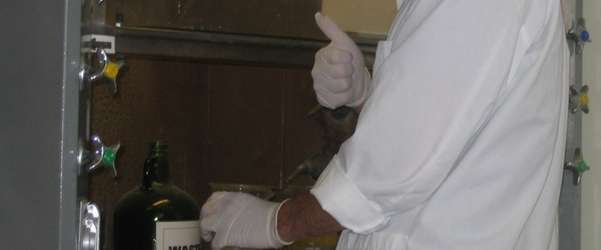Liquid Nitrogen Safety In The Lab: 10 Tips To Avoid LN2 Dangers
Liquid nitrogen isn’t just cool, it’s potentially deadly. We share our 10 tips for staying safe while working with liquid nitrogen.
Join Us
Sign up for our feature-packed newsletter today to ensure you get the latest expert help and advice to level up your lab work.

Liquid nitrogen isn’t just cool, it’s potentially deadly. We share our 10 tips for staying safe while working with liquid nitrogen.

Autoclaving something that isn’t autoclavable is usually embarrassing, dangerous, or both! Read this simple guide to autoclavable materials in biology labs to demystify what you can and can’t autoclave.

No matter how small or large, chemical spills require immediate attention. Learn how to manage spills by following these 4 essential rules.

Biological agents, including bacteria, viruses, parasites, and fungi, are categorized into four biosafety levels (BSL), each indicating a different threat level. These levels increase progressively, with level one organisms posing the least risk and level four the greatest. This article details each biosafety level, explaining their necessity and providing examples of organisms handled at each level.

Working alone in the lab outside of regular hours poses unique challenges and risks. Our guide offers practical advice to ensure your safety and productivity during these solo sessions, emphasizing the importance of preparation, communication, and adherence to safety protocols.

Learn about what reagents are usable past their chemical expiry date, how can you check if they are still okay, and which ones you should throw out.

Want to know how to use a fume hood? Keep your head out of it for starters. Here are 10 extra tips to keep you safe when using one!

Safety Data Sheets tell us how to handle and dispose of every chemical we use. This article explains what they are and how to decipher them.

It’s crucial that we stay safe in the lab. To prevent accidents, we should risk assess our work. So here’s how to conduct a risk assessment in 6 steps.

We all know acids are dangerous chemicals, and you should handle them carefully. But how should we handle bases? Read on for top tips for handling bases safely in the lab.

Laboratories brim with nasty chemicals and bugs. PPE protects you from them, but only if you don’t commit any of these PPE sins!

Gloves protect your skin from the numerous hazards lurking in labs. To help you stay safe, we’ll review the many lab glove types, then give you some handy tips on double-gloving, working with liquid nitrogen, coping with latex allergies, and how to best follow glove etiquette.

To help you keep safe and sound, we’ll review the most common types of PPE for the face and eyes, and give you some pointers on when (and when not!) to use them.

Working with chemicals is dangerous and can lead to injury, or worse. Follow these ten broadly applicable golden rules to help keep you and your colleagues working safely in the lab.

Acids are common and essential chemicals in any research laboratory. In this article, you’ll get advice on how to handle strong acids safely to give you the confidence to routinely prepare, handle, and dispose of them in the lab.

This article reassesses the dangers of using ethidium bromide and compares some supposedly safer alternatives

It’s all too easy to forget how many common lab chemicals are dangerous. Read on, as we bring you even more dangerous lab chemicals that you should not be messing with.

With hazards all around, it’s easy to forget how deadly even common chemicals in the lab are. But don’t worry—we’ve compiled a list of common, dangerous chemicals to help you out.

Baffled by all the safety signs in your lab? Here we give you an overview of the most common lab safety signs and tips on best practices for keeping safe.

Pipetting all day? Scrolling and scrolling through Excel columns trying to make sense of your data? Spending hours at the microscope because your boss wants Nature-worthy pictures? It’s not uncommon that performing lab work forces you into unhealthy postures, and after a day at work your spine begs for mercy. How Your Posture Suffers on…
Given enough time, even the worst rookie research disasters seem amusing. It’s a comedy of errors that test our wit and our patience, but ultimately leave a lifelong impression on how to try experimentation a little bit differently the second time around. With that said, here are 5 brief stories of amusing things I’ve witnessed…

As with any experiment, choosing the right personal protective equipment is essential. In this series we’ll take a look at what different types of hoods add to your arsenal of PPE, what they do and how you can benefit by using them. First, why do I even need a hood? It’s common to run a…
Common lab reagents may appear innocuous, but don’t be fooled! Sometimes even the most-used lab chemicals are hazardous to your health. It is important to make sure you have an understanding of the dangers a reagent can present before you use it. Which common chemicals should you look out for? Here is a brief look…
Personal Protective Equipment (PPE) such as your lab coat and gloves are an essential piece of kit when working in a laboratory; however, it is important to know when it is inappropriate to use PPE. 1) Don’t wear your lab coat, gloves or other PPE in offices or dining areas. They may have become contaminated…

You might be proud of your pipetting skills (if not, check this article on how to stop pipetting errors from ruining your experiments) and be churning out data faster than a liquid handling robot, but beware… you might also be pipetting yourself out of a job. I almost did. Pain due to pipetting is common….

While reading my back issues of Applied and Environmental Microbiology (AEM), I came across an interesting paper that detailed an in-depth study on the effectiveness of hand cleaners to remove Norwalk virus (NV) from intentionally contaminated hands. Yes that’s right – intentionally contaminated, and how. The study volunteers allowed a 20% stool suspension containing Norwalk virus to be…

Keeping safe in the lab really only requires one thing: common sense. But if you look at what people are doing in the lab, you might think that common sense isn’t so common after all. What are the most stupid things you have seen people do in the lab to put the safety of themselves…
Please read and pass this life-saving information on to your friends. A chemical that all of us use in the lab has turned out to be highly dangerous. It is an asphyxiant, can cause severe burns and is a contributor to the greenhouse effect. Medical organizations all over the world confirm it to be responsible…

Wide eyed and wet behind the ears, the rookie researcher steps into the lab for the first time. Armed with several years’ knowledge mined from text books, lectures and undergrad labs he feels ready to take his place amongst the worldwide legions of scientists who battle daily in the pursuit of knowledge. Little does he…

The eBook with top tips from our Researcher community.